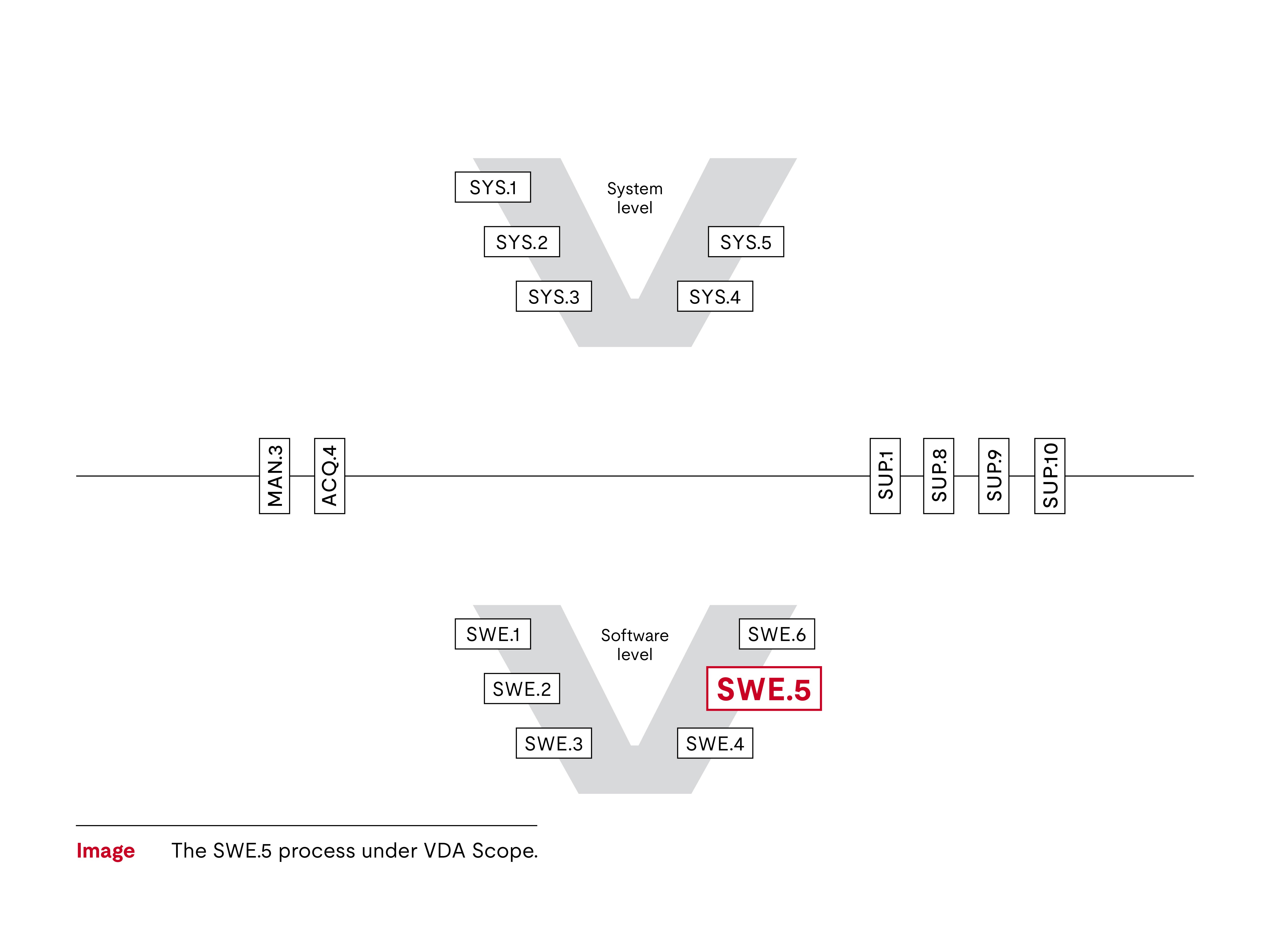
Process ID: SWE.5
Process group: Software Engineering
Automotive SPICE® is a trademark of VDA QMC.
The Software Integration and Integration Verification process in Automotive SPICE® (also known as SWE.5) helps your organization establish that the individual elements of the software architecture are integrated and then tested to prove they function as planned and interact as described in the software architecture.

The purpose is to check compliance with the software architecture, to integrate the software elements, and to verify that those elements are consistent with the software architecture and detailed design. This includes checking the static and dynamic aspects of the software architecture, the software component behavior and the interfaces according to the Software Architectural Design process (SWE.2).
Performing integration testing supports more robust software at a lower cost compared to exhaustive requirement testing. The following are the most important aspects of Software Component Verification and Integration Verification in Automotive SPICE®.
How to specify and select verification measures for software integration and component behavior.
This process requires that the verification measures to be used are defined, and should cover the following topics:
- The verification object in question.
- The methods for developing the verification measures.
- Pass/fail criteria.
- Entry, exit and interruption criteria.
- The required verification environment and infrastructure.
However, when specifying the verification measures, the format is not mandated. This process has a strong connection to Problem Resolution Management (SUP.9), allowing synergies in the handling of defects or failed verifications.
Another aim and expectation is that for different deliveries the software architecture is properly verified. Therefore, the appropriate verification measures must be selected. Here, there is a strong link to the project plan and the demand plan as coverage targets should also be considered. A regression verification approach is also required to prevent undesired errors in case of changes.
Provide bidirectional traceability and consistency to the software architecture and detailed design
- For the static and dynamic aspects of the software architecture and detailed design, you must know the corresponding verification measure and vice versa.
- For each interface, you must know the corresponding verification measure.
- For each verification measure, you must know the verification result.
Consistency requires that:
- The software architecture and detailed design are linked to the correct test.
- The interface is linked to the correct test.
- The test is suitable to test the test object completely. If not, additional tests must be linked.
Summarize and communicate test results
This test, typically called a test summary report, is typically sent to all project members. As the name suggests, it must summarize the results without providing unnecessary details while still demonstrating that the software architecture is compliant. Although it is only a summary, the report must provide adequate information to offer clarity.
Why choose UL Solutions Software Intensive Systems for Automotive SPICE® support?
UL Solutions Software Intensive Systems can support automotive original equipment manufacturers (OEMs) and suppliers in:
- Achieving the required capability levels within key development processes.
- Systematically improving existing workflows and methods.
- Evaluating the status of process improvements through formal assessments and gap analysis.
- Fulfilling the requirements of Automotive SPICE® in harmony with security, functional safety and agile methods.
- Training staff and assessors.
Learn more about the Automotive SPICE® Software Component Verification and Integration Verification process
Interested in deepening your understanding of the Automotive SPICE® Software Component Verification and Integration Verification process (SWE.5) from the Automotive SPICE® v4.0 base scope? Watch our video.
Get connected with our team
Thanks for your interest in our products and services. Let's collect some information so we can connect you with the right person.
